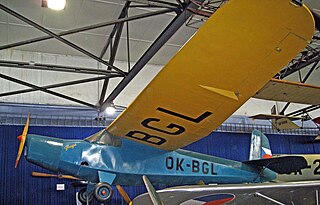
The Praga E.114 was a single-engine sport airplane, designed and manufactured by the Czechoslovakian company ČKD-Praga. Due to its light weight it was also called Air Baby.

The CANT Z.1012 was a small three-engined monoplane built in Italy in the late 1930s to carry either three or five passengers depending on the engines. A small number were built for Italian diplomatic use.
The Farman F.280 was a three engine, cantilever wing monoplane designed in France as a mail carrier in the early 1930s. Underpowered and slow, only two were built and briefly used.
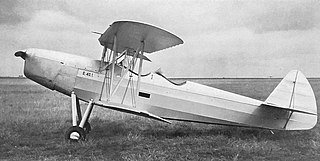
The Praga E-40 was a single engine, two seat, biplane basic trainer, built in Czechoslovakia in the mid-1930s.
The Gardan GY-120 was a single engine, parasol wing ultralight seating two in tandem, designed and built in France in the 1980s. It did not go into production.
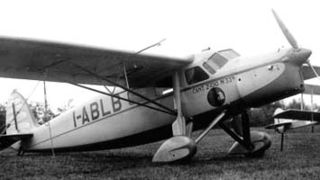
The CANT Z.1010 was a single engine, five seat Italian passenger aircraft flown in the mid-1930s. Only one was built.

The Starck AS-80 Holiday is a conventional two-seat, single-engine high-wing monoplane designed and built in France around 1950. It was sold in kit form but only a few were completed.

The Tachihi R-53 was amongst the first aircraft built in Japan after the relaxation of the ban imposed at the end of World War II. It is a parasol-wing, two seat, training aircraft powered by a British engine. Only one was produced.

The Pander P-1 and P-2 were close to-identical single engine Dutch sports aircraft with tandem seats and a parasol wing, first flying in 1929. Only two were built.
The Koolhoven F.K.44 was a two-seat, single engine sport monoplane designed and built in the Netherlands in the early 1930s. It was built to order, but only one was completed.
The Bloch MB.90 was the first all-metal French light aircraft. Only two aircraft were completed, making their first flights in 1932, though there were several variants.
The Potez 38 was a French single engine, eight or nine seat passenger aircraft flown in 1930. Only one was built.
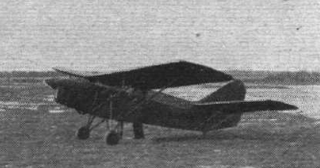
The SFCA Taupin was a French tandem-wing aircraft, designed to provide a simple, stable and safe aircraft able to take-off and land in small spaces.

The Heinkel HD 20 was a twin engine, three seat German biplane built in 1926 for civil survey work.
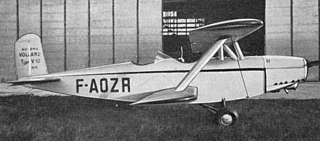
The Volland V-10 was a French two seat, low-powered biplane notable for its extreme stagger. It first flew in 1936 and appeared at the Paris Aero Salon that year.
The S.A.B.C.A. S.XII or S.A.B.C.A S.12 was a four-passenger light transport aircraft with three engines and a high wing, built in Belgium in the early 1930s.
The Gabriel P 6 was a Polish training aircraft and the P 7 a tourer. The difference between them was the wing configuration, chosen to optimise their speed range for their role, so the P 6 was a biplane and the P 7 a parasol wing aircraft.

The Huntington H-11 Governor was a two-seat cabin monoplane with a high, cantilever wing built in the United States and first flown around 1930. Three were completed.
The Tachikawa KKY, full name Tachikawa Army Small and Light Ambulance Aircraft was designed to rescue injured or sick patients from places without established airfields. Following two earlier prototypes, 21 production examples were built between 1936 and 1940 and served in the Second Sino-Japanese War.
The Kawanishi K-3 was a Japanese, fast, multi-purpose civil transport aircraft from the early 1920s. Despite its good performance it was eclipsed by the release of Army surplus machines and only one was built.











